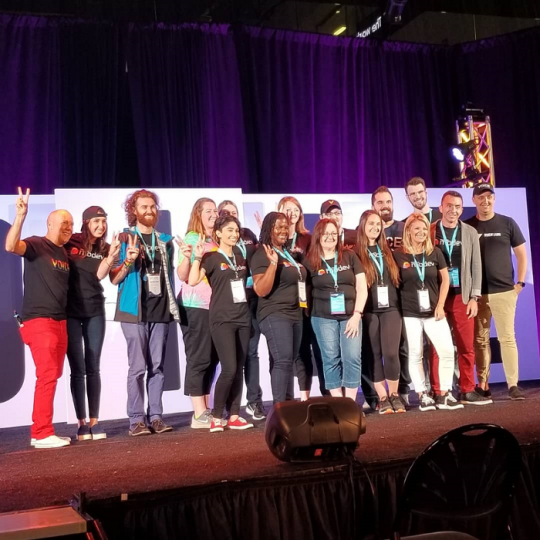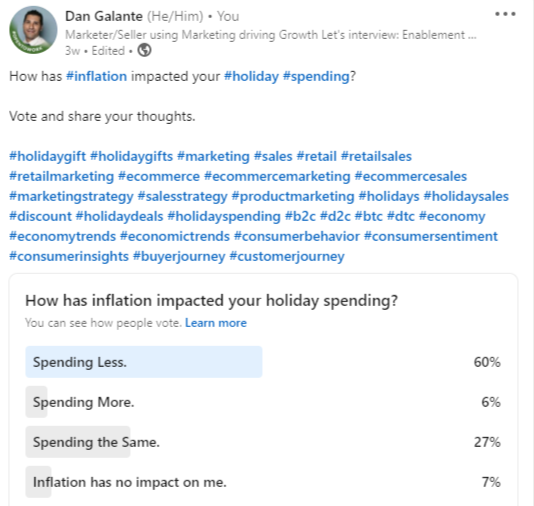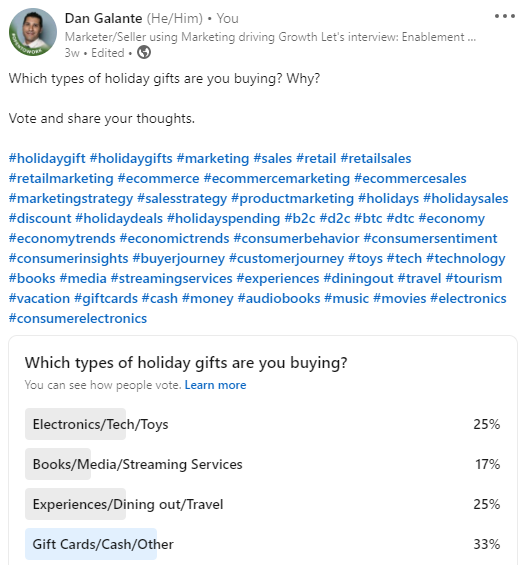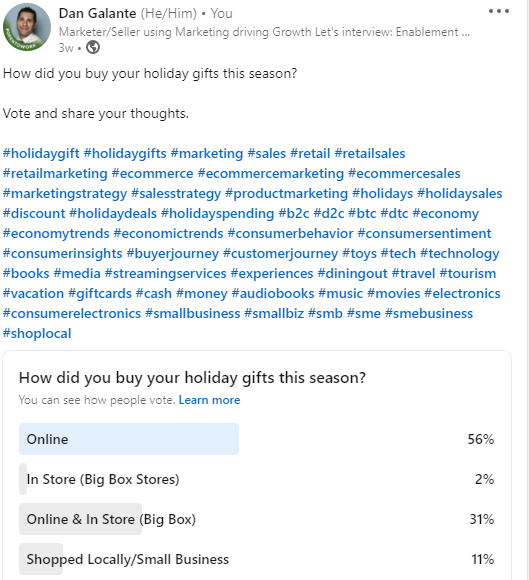How Voice Tech is Innovating Marketing & Customer Experience
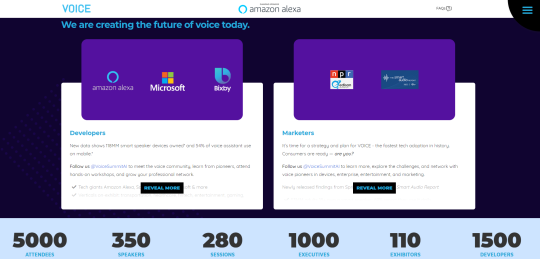
I covered Voice Summit last week at NJIT in Newark, New Jersey. Voice Summit is the largest voice tech conference that brings the conversational design ecosystem together in one place.
Last year was the first Voice Summit. It was amazing to see how the industry has advanced in the past year. This year, the conference grew to over 5,000 attendees!
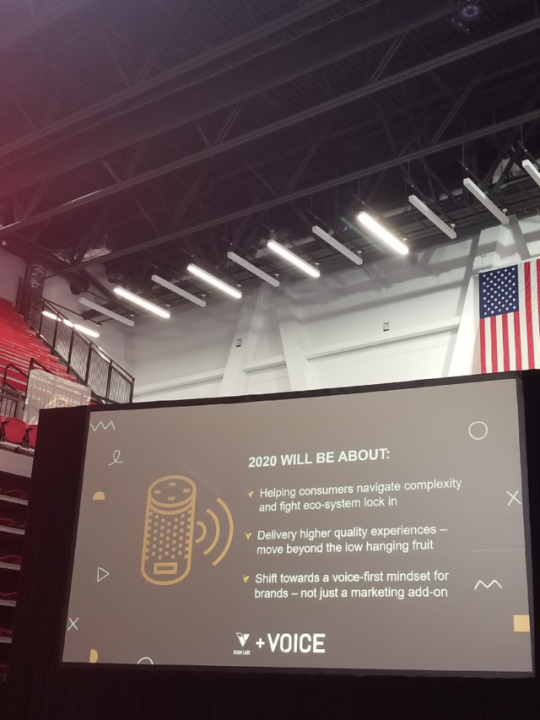
Voice Summit was a great place to network. Many Voice Startups demoed their offerings as well.
Founder Pete Erikson shares the story of Voice in the opening press conference. Pete shared the podium with Voice industry leaders and Newark Civic Leadership.
The conversation in Voice has shifted from should brands have a Voice Strategy to how to effectively incorporate voice technology across the organization. Attendees had opportunities to attend hands-on voice workshops on topics ranging from creating brand guidelines to building a voice strategy from the ground up. I took the Voice strategy workshop conducted by Brett Kinsella of VoiceBot.Ai. We received a workbook that had questions that served as building blocks to build our voice strategy.
I had was able to get a look at the Expo Floor where I was able to meet exhibitors and explore the Amazon Smart Home. It was amazing to see how voice technology has transformed the home experience. In this video, I was able to ask Alexa to play Who Wants to Be a Millionaire and to play music, etc.
Marketers have many opportunities with Voice and Audio Content according to Voices.com research. Content takes the form of short and long-form ranging from Flash Briefings up to Audiobooks.
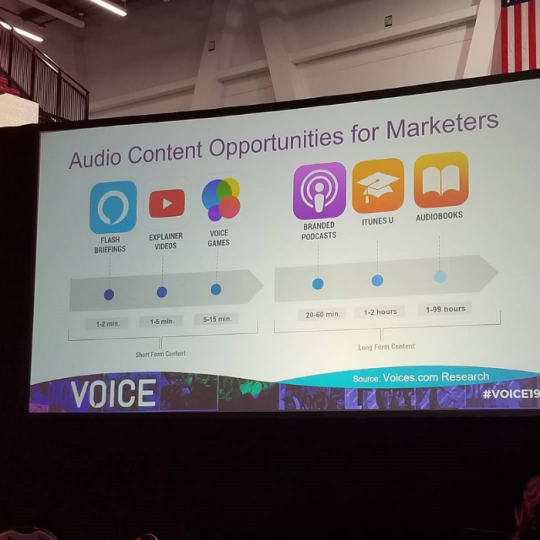
However, when it comes to smart speakers only, 18% of users discover skills from brand advertising according to Vixen Labs.
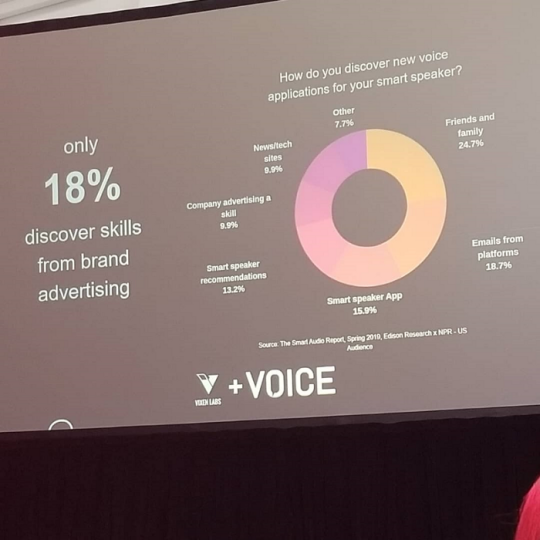
Brands need to prepare to change their Marketing and Advertising for Voice. A panel shared their thoughts on how to improve how to achieve this aim.
Edison Research and NPR conducted market research on the topic of smart speaker customer behavior. The number of smart speakers in U.S. homes grew 78% from December of 2017 to December. The research packed with data you can see here.
Brett Kinsella led a panel where Marketers shared how they have developed and implemented their strategy for Voice.
Steve Keller of Pandora shared his thoughts on the topic of Sonic Branding and Sound Business.
On a side note, NJIT was nice enough to provide me with a tour of the start-up incubator and co-working space opening this September. I was able to see areas being built from the ground up just as startups are.
I also was able to see the Alexa Cup which is Amazon’s initiative to pair Marketers and developers to work on projects such as Female Empowerment and Mental Health.
What touched me on a human level was the closing keynote entitled “A journey through a deaf developer’s eyes.” In this keynote, Thomas Chappell of Prudential shared his story. Thomas is unable to speak.
After his talk, I was able to meet him. People communicate with him using Voice to speech technology and American Sign language. I was able to use the technology on a smartphone to have a full conversation with him.
Voice Summit was an amazing conference. I want to thank Pete Erikson, the Modev Team, NJIT, the City of Newark, and the State of New Jersey for having me as their guest.
